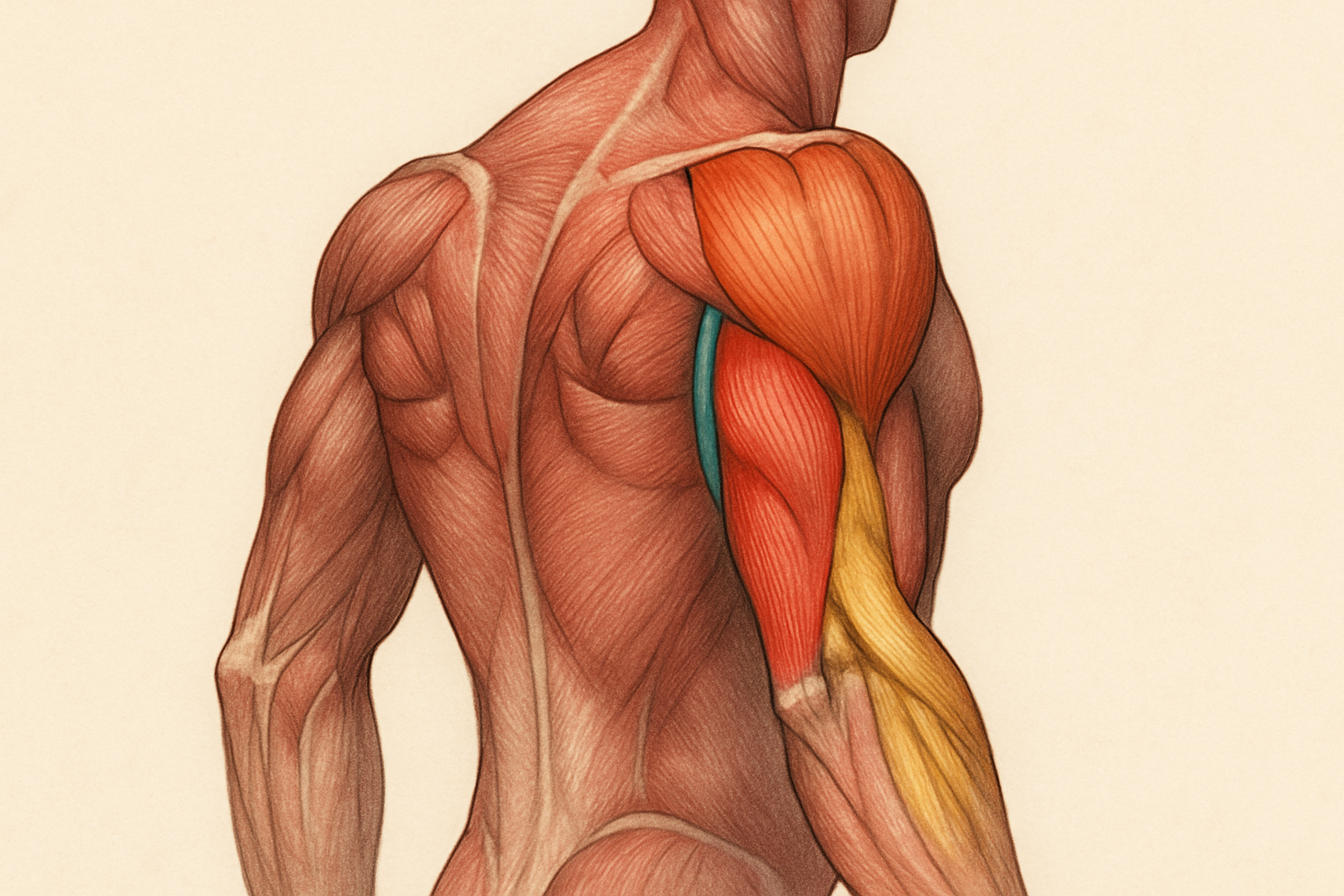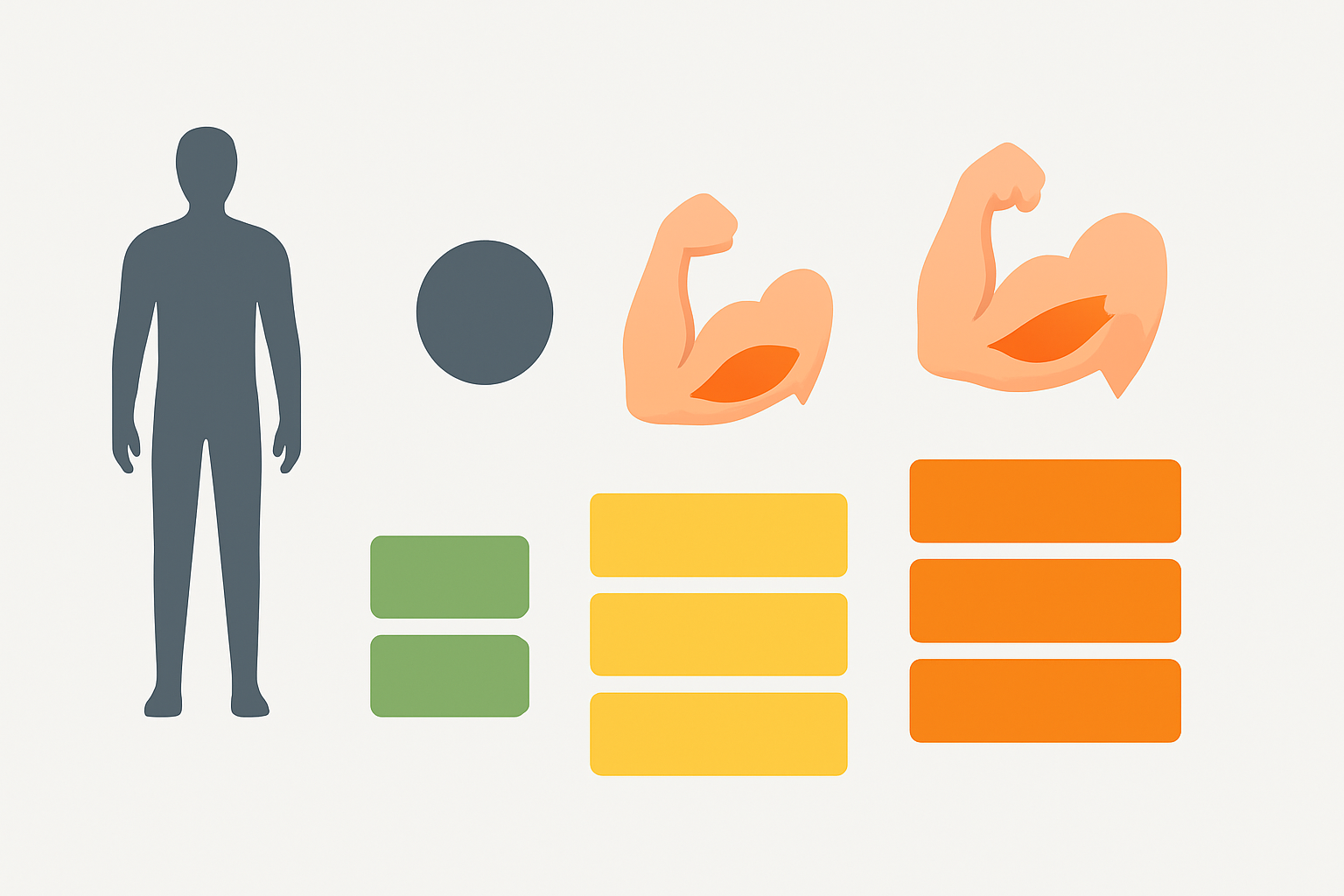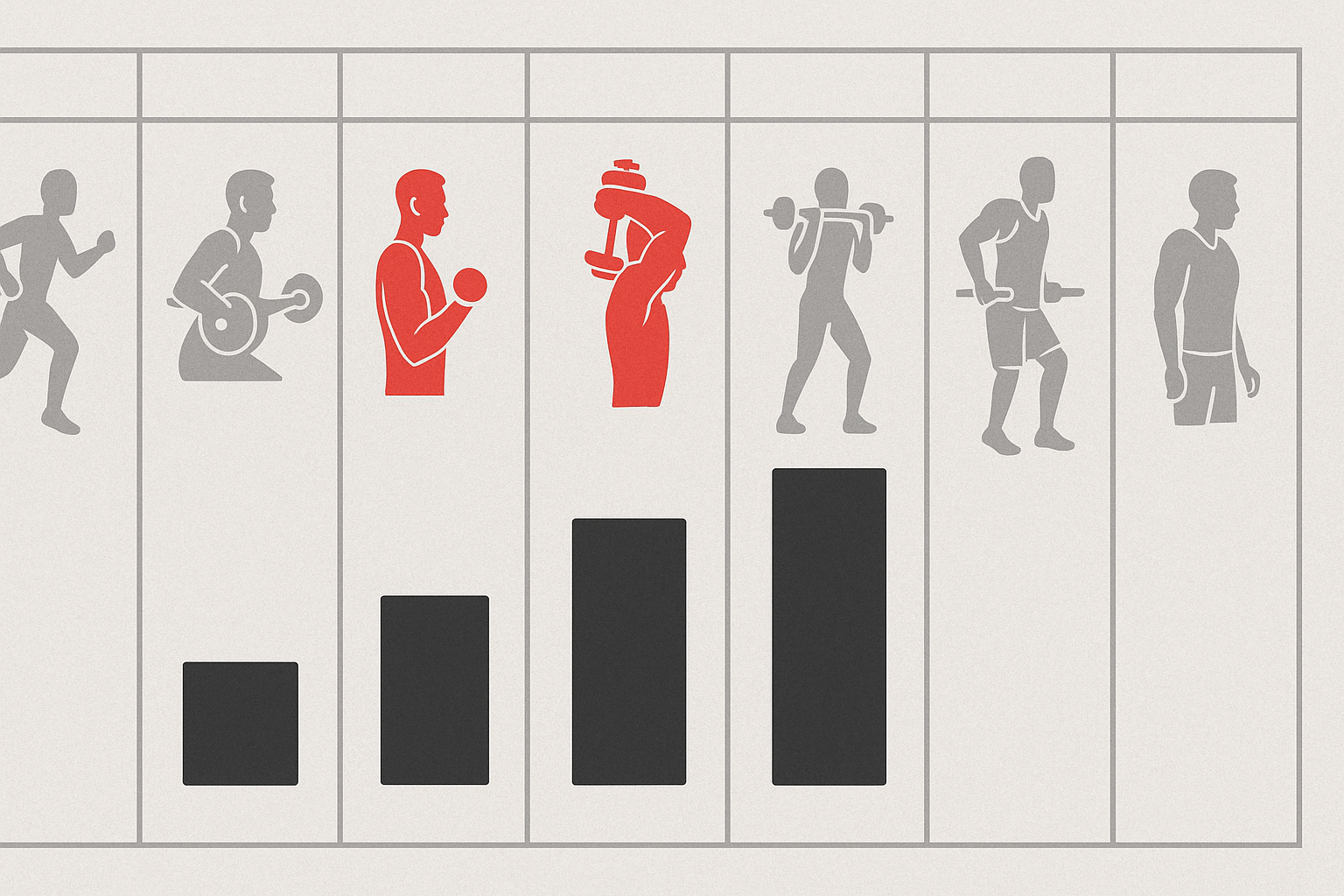Introduction: Why Triceps Matter More Than You Think in Strength Development
When it comes to sculpting strong, muscular arms and increasing upper body power, most fitness enthusiasts instinctively prioritize biceps. However, a closer look at anatomy and performance science reveals a different reality—your triceps make up nearly two-thirds of your upper arm mass and are fundamental for pushing strength. Whether you’re a strength athlete looking to add plates to your bench press or a bodybuilder chasing sleeve-busting arm growth, optimizing tricep development is non-negotiable. Central to achieving this is understanding how much tricep volume per week is ideal for stimulating hypertrophy and enhancing strength. Striking the right balance between stimulus and recovery is the difference between stalling in progress and unlocking continuous gains.
It’s not just about doing more; it’s about doing better. Many lifters unknowingly undertrain or overtrain their triceps, either of which can hinder progress. This guide explores the critical factors behind effective tricep training, the science behind volume thresholds, and practical strategies to customize your weekly routine for maximum muscle growth and strength. We’ll also address one of the most commonly asked questions in strength training: how many tricep exercises should I do? With insights grounded in exercise science and expert programming strategies, this comprehensive article provides an actionable roadmap for leveraging tricep volume intelligently to build stronger, more muscular arms.
You may also like: The Ultimate Hypertrophy Workout Program for Building Strength and Size

Understanding Tricep Anatomy and Its Role in Strength
To build a truly effective training program, it’s crucial to start with an understanding of tricep anatomy and biomechanics. The triceps brachii, commonly referred to as the triceps, consists of three heads: the long head, the lateral head, and the medial head. Each head plays a unique role in extending the elbow, stabilizing the shoulder, and contributing to pressing power. The long head originates at the scapula and crosses the shoulder joint, making it particularly active during overhead movements. The lateral and medial heads are more directly involved in pure elbow extension.
From a functional standpoint, the triceps are the prime movers in compound pushing exercises like the bench press, overhead press, and push-ups. They also contribute to stability in compound lifts like the front squat or overhead carries. Given their involvement in so many upper-body movements, well-developed triceps are essential for both aesthetic and performance goals. For strength athletes, weak triceps can become a bottleneck in pressing strength. For bodybuilders, neglecting triceps can lead to an unbalanced physique with limited arm circumference.
Understanding how to target all three heads of the triceps effectively requires not only exercise selection but also attention to volume and intensity. Traditional push-based training routines often emphasize the chest and shoulders, leaving triceps under-stimulated unless deliberate programming is applied. In the following sections, we will explore what constitutes optimal tricep volume per week to support both size and strength gains.

What Science Says About Tricep Volume per Week
Triceps, like any other muscle group, respond best to training protocols that adhere to the principles of progressive overload, specificity, and recovery. The concept of volume refers to the total amount of work performed, typically measured as sets x reps x load. For hypertrophy, numerous studies have demonstrated that weekly volume is a critical factor—sometimes even more important than intensity alone.
Emerging research and expert consensus in the field of resistance training suggest that a minimum of 10–15 working sets per week is generally required to stimulate noticeable hypertrophy in the triceps for intermediate lifters. For more advanced athletes, this number may increase to 16–20 sets per week depending on individual recovery capacity, training age, and overall program structure.

It’s also important to differentiate between direct and indirect tricep work. Compound lifts like the bench press and overhead press do recruit the triceps, but they are not sufficient alone for maximizing growth, particularly in the long head of the triceps. Direct isolation movements such as overhead extensions, rope pushdowns, and skull crushers are essential for achieving full muscular development. This is where a structured approach to tricep volume per week becomes crucial—not just in quantity, but also in exercise selection and variation.
Additionally, there is strong evidence that spreading your volume across multiple sessions throughout the week yields better results than cramming all sets into one or two days. Training the triceps two to three times per week with appropriately scaled volume allows for better motor learning, increased muscle protein synthesis, and improved recovery.

How Many Tricep Exercises Should I Do for Optimal Growth?
A common point of confusion for many lifters is determining how many different tricep exercises are necessary within a training week to ensure balanced development. While variety can certainly aid in hitting all three heads of the triceps and reducing overuse injuries, more does not always mean better. Quality trumps quantity, particularly when each exercise is executed with intent, proper form, and progressive overload.
The answer to the question—how many tricep exercises should I do—depends largely on training frequency, experience level, and program design. For most intermediate to advanced trainees, including two to three distinct tricep exercises per session, performed two to three times per week, is sufficient to target all heads of the triceps. This might look like incorporating a compound press that emphasizes the lateral and medial heads, a vertical extension for the long head, and a finishing movement like cable pushdowns for pump and volume.
To avoid redundancy and overuse, it’s wise to vary angles, equipment, and grips throughout the week. For example, one session might include close-grip bench press, overhead dumbbell extension, and rope pushdowns, while another features dips, cable overhead extensions, and skull crushers. This approach ensures well-rounded development and prevents adaptive resistance, where muscles become less responsive to a repeated stimulus over time.
It’s not just about picking exercises randomly; there should be a logic to how each movement complements the others in terms of joint stress, muscle activation, and recovery demand. The goal is to create synergy within your training week, allowing each exercise to serve a purpose within your broader plan for progressive overload.

Structuring Weekly Training with Proven Tricep Volume per Week
To apply the principles of optimal volume in a real-world setting, it’s important to build your weekly training routine with intention. First, determine your total tricep volume target based on your training level. Beginners might start with 6–10 direct sets per week, intermediates can progress to 12–16 sets, and advanced trainees might need up to 20 or more depending on their goals and recovery.
Next, distribute these sets across two or three sessions. For example, an intermediate athlete aiming for 15 sets per week might train triceps directly on Monday, Wednesday, and Saturday, performing five focused sets each day. Each session should feature one compound movement and two isolation exercises to ensure complete activation across all heads of the triceps.
Be mindful of cumulative fatigue, especially if your training program includes a high volume of chest or shoulder pressing. Since the triceps are involved in those movements as secondary muscles, they are already receiving some stimulus. This is why tracking your total tricep volume per week is essential—not only to make sure you’re doing enough, but also to avoid doing too much.
To measure progress, track metrics such as strength gains on key lifts, pump quality, muscle soreness, and weekly performance consistency. If you’re not seeing improvements in strength or size, or if you’re experiencing persistent elbow discomfort, these may be signs that your tricep volume is either too low or too high.

Frequently Asked Questions: Advanced Insights on Tricep Training Volume and Programming
What are the long-term consequences of neglecting optimal tricep volume per week in a strength training routine?
Neglecting appropriate tricep volume per week over an extended period can lead to structural and performance imbalances, especially in athletes or serious lifters. Since the triceps contribute significantly to pressing power, undertraining them may cause progress in key lifts such as the bench press or overhead press to stagnate. Over time, this imbalance can also increase the risk of shoulder injuries, as the deltoids and pectorals are forced to compensate. Additionally, chronic under-stimulation of the triceps limits overall arm development, leading to a physique that lacks proportion and density. From a neuromuscular perspective, the motor pathways responsible for efficient elbow extension become less coordinated without adequate tricep volume, diminishing strength expression even when effort is high.
How does training age influence ideal tricep volume per week?
Training age—the number of years you’ve trained consistently and intelligently—significantly influences the amount of tricep volume per week you can and should handle. Novices typically require less volume due to heightened sensitivity to new stimuli; 6–10 quality sets per week may yield excellent results early on. As training experience increases, muscles adapt and become more resistant to stress, necessitating a gradual increase in volume. Intermediate lifters often thrive at 12–16 sets per week, while advanced athletes may push toward 20+ weekly sets, provided recovery is optimized. Importantly, this scaling should occur alongside improvements in training quality, load management, and recovery strategies to avoid overuse injuries.
Is there a difference in tricep volume requirements between strength-focused and hypertrophy-focused lifters?
Yes, strength and hypertrophy goals often demand different strategies for programming tricep volume per week. Strength-focused athletes benefit from lower-to-moderate volume performed at higher intensities and lower rep ranges, often emphasizing compound lifts where triceps are secondary movers. These lifters may thrive on 8–12 direct weekly sets supplemented by heavy bench or overhead pressing. In contrast, those pursuing hypertrophy generally require higher volume, varied rep ranges, and more isolation work targeting each tricep head. A hypertrophy-based routine could involve 15–20 direct sets per week with diverse movements that include cables, dumbbells, and bodyweight variations. Tailoring volume to these specific goals ensures each pathway of muscular adaptation is appropriately stimulated.
How can I tell if I’m doing too much or too little tricep volume per week?
Monitoring progress and physiological feedback is key to determining whether your tricep volume per week is too high or too low. Signs of insufficient volume include stalled strength gains, minimal hypertrophy, or lack of a noticeable “pump” during sessions. Conversely, excessive volume often leads to persistent soreness, joint pain (especially around the elbow), disrupted sleep, and performance regression. Using a training log to track weekly volume, perceived exertion, and recovery quality helps identify trends. Additionally, adjusting variables like sleep, nutrition, and intra-session rest can clarify whether underperformance stems from excessive training or insufficient recovery. Athletes should also periodically assess movement quality; compensations in form often indicate triceps are under-recovered.
How many tricep exercises should I do when training with limited time?
When time is constrained, choosing the right number and type of tricep movements becomes critical. If you’re wondering how many tricep exercises should I do in a 30- to 40-minute session, the answer typically falls between one and two well-chosen, compound or multi-joint exercises. For maximum efficiency, prioritize movements that emphasize different tricep heads, such as a close-grip bench press paired with an overhead dumbbell extension. Executing 3–4 challenging sets of each can produce enough training volume when combined with proper intensity and form. Moreover, integrating supersets with antagonist muscle groups or compound sets for triceps can help accumulate volume efficiently while maintaining high metabolic output.
How should I adjust tricep training volume during a calorie deficit?
During a caloric deficit, your body has fewer resources available for recovery and muscle growth, so modifying tricep volume per week becomes essential. While the instinct might be to keep pushing hard, maintaining rather than increasing training volume is usually more effective during fat loss phases. Reducing weekly sets by around 20% while maintaining intensity and execution quality often preserves muscle mass without compromising joint health or recovery. It’s also critical to emphasize nutrient timing and adequate protein intake to support muscle retention. In some cases, transitioning to a maintenance calorie phase every few weeks can allow for strategic volume spikes to preserve lean mass more effectively.
What advanced periodization methods help manage tricep volume per week for elite lifters?
Elite lifters often use undulating or block periodization to manage tricep volume per week without compromising performance or joint integrity. Undulating periodization involves varying volume and intensity throughout the week—for example, using high-rep isolation work on Monday and low-rep compound presses on Thursday. Block periodization divides the training calendar into focused phases, such as accumulation blocks (higher volume) followed by intensification blocks (lower volume, higher load). This approach prevents staleness and enhances recovery, especially when triceps are taxed heavily in multiple pressing movements. Autoregulation techniques, such as rating of perceived exertion (RPE) or velocity-based training (VBT), also help elite athletes gauge when to adjust tricep volume dynamically based on fatigue or performance markers.
How many tricep exercises should I do to target all three heads effectively?
To comprehensively train the long, lateral, and medial heads of the triceps, lifters often ask: how many tricep exercises should I do in a session? Ideally, selecting three exercises that each emphasize a different anatomical function provides balanced stimulation. For example, overhead extensions hit the long head due to shoulder flexion, while rope pushdowns target the lateral head, and close-grip presses engage the medial head along with overall mass. Rotating variations of these patterns across training days prevents redundancy while maximizing adaptation. For lifters training triceps two to three times weekly, this could mean performing 6–9 unique exercises spread across those sessions, ensuring all muscle fibers are challenged without overuse.
How does age affect tricep volume programming and recovery?
As lifters age, changes in hormonal profiles, joint resilience, and recovery capacity require careful adjustment of tricep volume per week. Older athletes often experience slower tissue regeneration and more joint sensitivity, particularly in the elbows and shoulders. Therefore, prioritizing quality over quantity becomes essential; lower-volume, higher-frequency routines with controlled eccentric tempos and perfect form can yield superior outcomes. Using machines and cables instead of heavy free weights may reduce joint strain while still applying adequate muscular stress. Additionally, older lifters may benefit from increasing mobility work and intra-session rest to enhance performance without compromising recovery.
Emerging Trends in Tricep Training: What Future Research May Reveal About Tricep Volume per Week
The fitness and sports science community continues to explore nuanced variables that influence optimal tricep volume per week. Wearable tech, like electromyography (EMG) sensors and recovery trackers, is enabling lifters to assess real-time muscular engagement and fatigue patterns. This could refine how volume is prescribed and adjusted based on individual biomechanics and neuromuscular efficiency. Research into blood flow restriction (BFR) training has also opened new possibilities for achieving hypertrophy with lower loads, allowing lifters to reduce mechanical joint stress while preserving high training volume. Furthermore, longitudinal studies may soon offer clearer guidelines on lifetime volume progression and its impact on joint health and muscle longevity. As our understanding of muscle-specific periodization evolves, personalized AI-driven coaching platforms may eventually prescribe individualized tricep programming based on real-time data feedback.
Conclusion: Mastering Tricep Volume for Long-Term Strength and Muscle Growth
Building impressive triceps isn’t a matter of guesswork or genetic luck—it’s a matter of strategic planning, intelligent programming, and consistent execution. The research and real-world experience agree: managing your tricep volume per week with precision is one of the most powerful levers you can pull for unlocking upper body strength and muscular development. By focusing on optimal volume, exercise variety, and structured progression, you can ensure that your triceps not only grow in size but also enhance your pressing strength and athletic performance.
As with any advanced training concept, there is no one-size-fits-all answer. The key lies in understanding your current abilities, monitoring recovery, and adjusting your volume over time. Whether you’re still asking “how many tricep exercises should I do” or fine-tuning your weekly sets for peak growth, applying these principles will elevate your training to a new level. Stay patient, stay consistent, and let your results speak louder than your effort alone.





